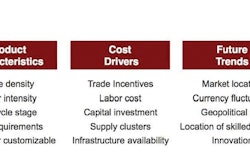
Business commerce is a fast-paced, changing world and no one knows this better than shipping and trucking companies. While front-line employees at these firms are responsible for delivering goods to their destinations securely and on time, accounting and finance executives have an equally critical task: to ensure that invoicing and payments are accurate and conducted on a timely basis.
To accomplish this, every month finance executives typically sort through multiple financial transactions between a buyer and supplier to determine which party owes the other money and how much is owed. This information is not easily apparent due to many factors including incomplete shipments, damaged goods and other delivery issues that affect invoicing. When you multiply these issues by the number of shipments conducted between a company and its customers over the course of the month, reconciling payments has become a complicated, time-consuming process, involving large sums of money—which affect cash flow and customer satisfaction.
Best practice application
Financial netting is a best practice to address this issue. Trucking and shipping firms worldwide use financial netting to automatically merge payables and receivables from multiple transactions into one invoice. These transactions—such as buying and selling freight, trade routes and cargo—are treated as a series of debits and credits that balance out at the end of a month with one trading partner owing the other.
The benefits of financial netting (also known as financial clearing) are many. By avoiding the need to issue and process invoices for dozens to hundreds of thousands of individual transactions per month, companies are able to save substantial time, effort and costs.
This same practice is used to merge debits and credits within a multi-national company and is known as intercompany netting. In this case, business transactions among the different subsidiaries are balanced out monthly, enabling the parent company to consolidate its payables and receivables organization-wide. Intercompany netting is particularly attractive for multi-national shipping and trucking firms operating across borders and currencies, since it consolidates all payables and receivables transactions into a single invoice with a single currency using a single accounting system. This best practice not only avoids exchange rate issues but also provides significant time and cost savings.
The unified ledger approach
To effectively implement financial netting and capture transactions in a merged invoice, whether conducted across companies or among subsidiaries of a multinational firm, transportation and logistics companies need visibility into accurate information across their receivables and payables organization-wide. Yet, with so many transactions conducted on an ongoing basis, this real-time visibility is often elusive. Compounding this problem, many companies have three separate ledgers for General Ledger, accounts payable (AP) and accounts receivable (AR), which can cause them to be out of balance with each other and increase errors in these three areas.
An accounting model that effectively addresses these issues and enables the accurate consolidation of debits and credits is the single-ledger approach. Under this model, trucking and shipping companies establish one unified ledger that combines AR, General Ledger and AP in one. This practice increases accuracy by avoiding errors, duplicate entries and the need to reconcile or integrate subsystems. Another key benefit of the single-ledger model is that companies have “one version of the truth,” enabling everyone to see the same, accurate information in real time—which in addition to facilitating better, more accurate invoicing, also provides insights for reporting and forecasting.
To effectively conduct business in a fast-paced, rapidly changing marketplace, shipping and trucking companies need streamlined payment processes and real-time visibility into finances. Financial netting allows these firms to ensure more accurate and timely invoicing and payments with trading partners, while significantly cutting costs and time. Similarly, intercompany netting enables multi-national organizations to benefit from consolidated payables and receivables across their subsidiaries.
The best practice of balancing debits and credits—combined with a unified ledger approach—give shipping and trucking companies the edge they need to be agile and successful in today’s competitive business environment.
Debra Carbone is Transportation & Logistics Lead for UNIT4 Business Software, the North American subsidiary of UNIT4, a $624 million global business software and services company that creates, provides and supports software delivered via the cloud and on-premise.



















